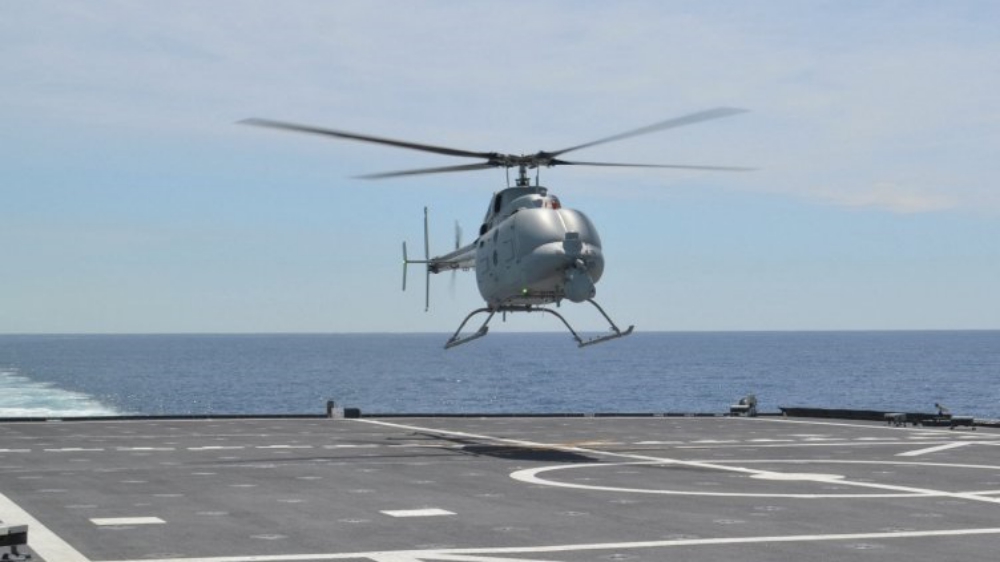The US Navy (USN) is continuing to evolve the MQ-8C variant of the Fire Scout vertical take-off and landing unmanned aerial vehicle (VTOL UAV), service officials told Jane’s .
Capability is currently spread across the two variants of the Fire Scout – the Schweizer 333-derived MQ-8B and the Bell 407-based MQ-8C – but eventually modifications will be made to ensure that the C-model can solely support the navy’s mission.
Modifications include the introduction of a Link 16 datalink to enhance the UAV’s ability to network the Lockheed Martin MH-60 naval helicopter. This will enable the helicopter crew to receive data being collected by the Fire Scout directly instead of relaying it via the Littoral Combat Ship (LCS).
“The direct link between the two is the LCS at the moment,” Captain Eric Soderberg, programme manager at the USN’s Multi-Mission Tactical Unmanned Aerial Systems office (PMA-266), told Jane’s .
“Future variants are going to have a Link 16, so that any Link 16-enabled platform will be able to share the sensor data from the Fire Scout, as well as the Link 16-enabled H-60s,” he added.
This will provide more scope for the UAV to further engage with other USN assets that are Link 16-enabled – which constitutes the majority of the service’s platforms – so the entire air wing’s worth of data would then potentially be available for the Fire Scout to receive, or for it to feed back into.
The MQ-8C’s 12 hour endurance enables it to carry out more on-station surveillance than the 3.5 hour endurance of the MH-60S, while the forthcoming introduction of the new Leonardo distributed aperture active electronically scanned array (AESA) radar on this variant will also provide a capability not found on the helicopter.
Source: Jane’s 360

